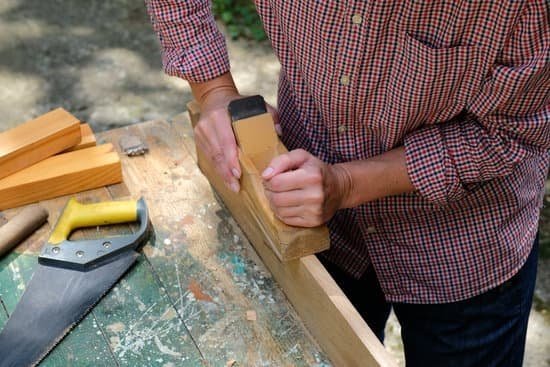Is it safe to burn the scraps from woodworking is a question commonly asked by individuals looking for ways to dispose of excess wood materials. Burning wood scraps has been a longstanding practice for many woodworkers, but concerns regarding its safety and potential risks have emerged in recent years.
This article will delve into the various aspects of burning wood scraps, including health and safety concerns, environmental impact, legal regulations, alternative disposal methods, types of wood to avoid burning, and safety precautions.
The act of burning wood scraps may seem like a convenient way to get rid of excess materials, but it raises important considerations about air quality and public health. Particulate matter and harmful chemicals released during the combustion process can pose serious health risks, especially for those with respiratory conditions. Additionally, the potential environmental impact of burning wood scraps raises concerns about air and soil pollution, further highlighting the need to examine this practice more critically.
In different regions, legal regulations govern the burning of wood scraps due to its potential impact on public health and the environment. Understanding these laws is crucial for individuals practicing woodworking as it ensures compliance with local regulations and minimizes any negative consequences associated with burning wood scraps. This article will also explore safer and more environmentally friendly ways to dispose of woodworking remnants and identify specific types of wood that should not be burned due to their toxic fumes.
Health and Safety Concerns
Burning wood scraps from woodworking is a common practice for many individuals, but it raises important health and safety concerns that should not be overlooked. The act of burning wood scraps can release harmful pollutants into the air, contributing to poor air quality and posing potential health risks to those exposed to the fumes.
One of the main concerns is the release of fine particulate matter, which can penetrate deep into the lungs and cause respiratory issues, especially in individuals with pre-existing conditions such as asthma or chronic obstructive pulmonary disease (COPD).
In addition to fine particulate matter, burning wood scraps can also release hazardous air pollutants such as benzene, formaldehyde, and polycyclic aromatic hydrocarbons. These substances have been linked to various health problems, including cancer, reproductive effects, and respiratory issues. As a result, individuals who burn wood scraps may be putting themselves and others at risk of developing serious health conditions.
Furthermore, the environmental impact of burning wood scraps cannot be ignored. In addition to air pollution, the practice can also contribute to soil pollution and damage ecosystems. This raises important questions about whether burning wood scraps is truly a safe or responsible way to dispose of woodworking waste.
| Health Implications | Concerns |
|---|---|
| Air Pollution | Respiratory Issues |
| Fine Particulate Matter | Hazardous Air Pollutants |
| Cancer Risk | Environmental Impact |
Environmental Impact
Burning wood scraps from woodworking can have a significant environmental impact, particularly in terms of air and soil pollution. While it may seem like a convenient way to dispose of excess wood, the practice can contribute to detrimental effects on the environment.
The environmental consequences of burning wood scraps include:
- Air Pollution: When wood is burned, it releases pollutants such as carbon monoxide, nitrogen oxides, and volatile organic compounds into the atmosphere. These pollutants can contribute to poor air quality and have adverse effects on human health.
- Soil Pollution: The ash that remains after burning wood scraps can contain harmful substances such as heavy metals and other toxic chemicals. When this ash leaches into the soil, it can contaminate water sources and harm ecosystems.
In light of these environmental impacts, it is important to consider alternative disposal methods for wood scraps. Instead of burning them, woodworkers can explore options such as recycling or repurposing the scraps, or utilizing them for biomass energy production.
It is crucial to prioritize environmentally friendly practices when it comes to disposing of wood scraps. By doing so, individuals can help minimize the negative impact on the environment and promote sustainable waste management. Is it safe to burn the scraps from woodworking? It’s essential to weigh the potential environmental consequences before determining the best course of action for disposal.
Legal Regulations
Burning wood scraps from woodworking is a common practice, but it’s important to be aware of the legal regulations surrounding this activity. While some areas may allow burning of wood scraps under certain conditions, others have strict laws prohibiting this practice due to its potential health and environmental impact. It is essential to understand the specific regulations in your area before engaging in burning wood scraps to avoid legal consequences.
Here are some key legal regulations to consider when it comes to burning wood scraps in different areas:
- Municipal Restrictions: Many cities and municipalities have ordinances or bylaws that regulate outdoor burning, including the burning of wood scraps. Some areas may require permits for open burns, while others may have designated burn days or restrict certain types of materials that can be burned.
- Air Quality Regulations: State and federal environmental agencies often have regulations in place to protect air quality. These regulations may include restrictions on burning wood and other waste materials, especially in urban or densely populated areas where air pollution can pose significant health risks.
- Environmental Protection Laws: Burning wood scraps can also impact soil and water quality, which may be regulated by environmental protection laws. In some cases, burning certain types of treated or painted wood can be considered hazardous waste disposal, subject to strict regulations.
It is important to research and understand the specific legal regulations in your area regarding the burning of wood scraps from woodworking. Failure to comply with these regulations can result in fines and other penalties. If burning wood scraps is not permitted in your area, there are alternative disposal methods that are safer and more environmentally friendly.
Remember that violating these legal regulations not only puts you at risk of facing penalties but also contributes to environmental pollution and potential health hazards for yourself and those around you. Always prioritize safety, legality, and environmental responsibility when deciding how to dispose of woodworking scraps.
Alternative Disposal Methods
Burning wood scraps from woodworking is a common practice, but it can pose several health and environmental risks. Therefore, it is important to consider alternative disposal methods that are both safer and more environmentally friendly. One option for disposing of wood scraps is recycling.
Many woodworking scraps can be repurposed or recycled into other products, reducing the need for new raw materials and minimizing waste. Additionally, donating wood scraps to local schools, community centers, or artists can provide them with materials for art projects or other creative endeavors.
Another alternative method for disposing of wood scraps is composting. Certain types of untreated wood, such as sawdust and small wood chips, can be added to a compost pile to create nutrient-rich soil for gardening and landscaping. This not only reduces waste but also promotes sustainability by returning organic material back to the earth in a safe and eco-friendly manner.
Furthermore, another environmentally friendly way to dispose of wood scraps is through biomass energy production. Wood scraps can be used as a renewable source of energy by converting them into biofuels or using them to generate heat and electricity. This process helps reduce reliance on fossil fuels and decreases the overall environmental impact of traditional energy sources.
| Disposal Method | Benefits |
|---|---|
| Recycling | Reduces the need for new raw materials and minimizes waste |
| Composting | Creates nutrient-rich soil for gardening and landscaping while promoting sustainability |
| Biomass Energy Production | Provides a renewable source of energy and reduces reliance on fossil fuels |
Types of Wood to Avoid Burning
When it comes to burning wood scraps from woodworking, not all types of wood are safe to burn. In fact, certain types of wood can release toxic fumes when burned, posing serious health risks to those nearby. It is crucial for woodworkers and individuals who use wood-burning stoves or fireplaces to be aware of the types of wood that should be avoided for burning.
Pressure-Treated Wood
One type of wood that should never be burned is pressure-treated wood. This type of wood is treated with chemicals that are intended to prevent rot and insect infestation. When pressure-treated wood is burned, it releases harmful substances such as arsenic and chromium into the air. Breathing in these toxic fumes can lead to serious health issues, including respiratory problems and even certain forms of cancer.
Plywood and Particleboard
Plywood and particleboard are commonly used in woodworking projects, but they should never be burned due to the adhesives and glues used in their construction. When these materials are burned, they release formaldehyde fumes into the air, which can cause irritation to the eyes, nose, and throat, as well as more serious health concerns with prolonged exposure.
Painted or Stained Wood
Wood that has been painted or stained is also unsuitable for burning. The paints and stains used on these woods often contain chemicals that can produce harmful fumes when burned. Inhaling these fumes can result in dizziness, nausea, headaches, and respiratory irritation.
Safety Precautions
When it comes to burning wood scraps from woodworking, safety should always be the top priority. While there are potential health and environmental risks associated with this practice, there are certain safety precautions that can be taken to minimize these risks. If you decide that burning wood scraps is the most feasible option for you, it is important to follow these guidelines to ensure the process is as safe as possible.
Proper Ventilation
One of the most important safety precautions when burning wood scraps is to ensure proper ventilation. This means choosing an outdoor location away from any buildings, trees, or other flammable materials. Adequate ventilation will help reduce the amount of smoke and pollutants that can be harmful if inhaled.
Use a Screen or Chimney
To contain embers and prevent accidental fires, consider using a screen or chimney while burning wood scraps. This will help control the spread of sparks and ashes, reducing the risk of igniting nearby combustible materials.
Avoid Treated Wood
It’s crucial to only burn untreated wood scraps. Treated wood contains chemicals and toxins that can release harmful pollutants when burned, posing significant health and environmental risks. Make sure you properly identify the type of wood before burning it.
Conclusion
In conclusion, the practice of burning wood scraps from woodworking can have significant health and environmental implications. The release of air pollution and toxic fumes can contribute to respiratory issues and soil contamination, posing risks to both human health and the environment. Additionally, legal regulations surrounding the burning of wood scraps vary by location, so it is important for individuals to be aware of their local laws before engaging in this practice.
Given the potential risks associated with burning wood scraps, it is advisable to explore alternative disposal methods that are safer and more environmentally friendly. Recycling, composting, or repurposing wood scraps are all viable options that can help reduce the detrimental impact on air quality and soil health. Furthermore, identifying certain types of wood that should not be burned due to their toxic fumes is crucial in minimizing the potential harm caused by this practice.
When considering whether it is safe to burn wood scraps from woodworking, it is essential to prioritize the well-being of both individuals and the environment. While there may be situations where burning wood scraps can be done safely with proper precautions, it is important to weigh the potential risks against any short-term benefits. Ultimately, exploring alternative disposal methods while prioritizing safety and environmental preservation is key in addressing this issue responsibly.
Frequently Asked Questions
Is It Safe to Burn Freshly Cut Wood?
Burning freshly cut wood is generally not recommended as it has a high moisture content, which can lead to more smoke and less efficient burning. It’s best to let the wood dry out before using it as firewood.
Is Wood Toxic When Burned?
When burned, wood can release toxins such as carbon monoxide, nitrogen oxides, and volatile organic compounds if not burned at the right temperature. This can be harmful to human health and the environment, so it’s important to use properly seasoned wood for burning.
Should Scraps of Treated Wood Be Burned at the Job Site?
No, scraps of treated wood should not be burned at the job site. Treated wood contains chemicals like arsenic and creosote that can release toxic fumes when burned. Proper disposal of treated wood scraps is essential for environmental and human safety.

Hi everyone! I’m a woodworker and blogger, and this is my woodworking blog. In my blog, I share tips and tricks for woodworkers of all skill levels, as well as project ideas that you can try yourself.





